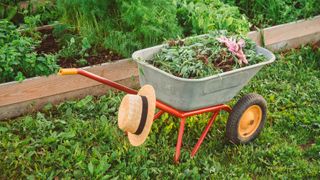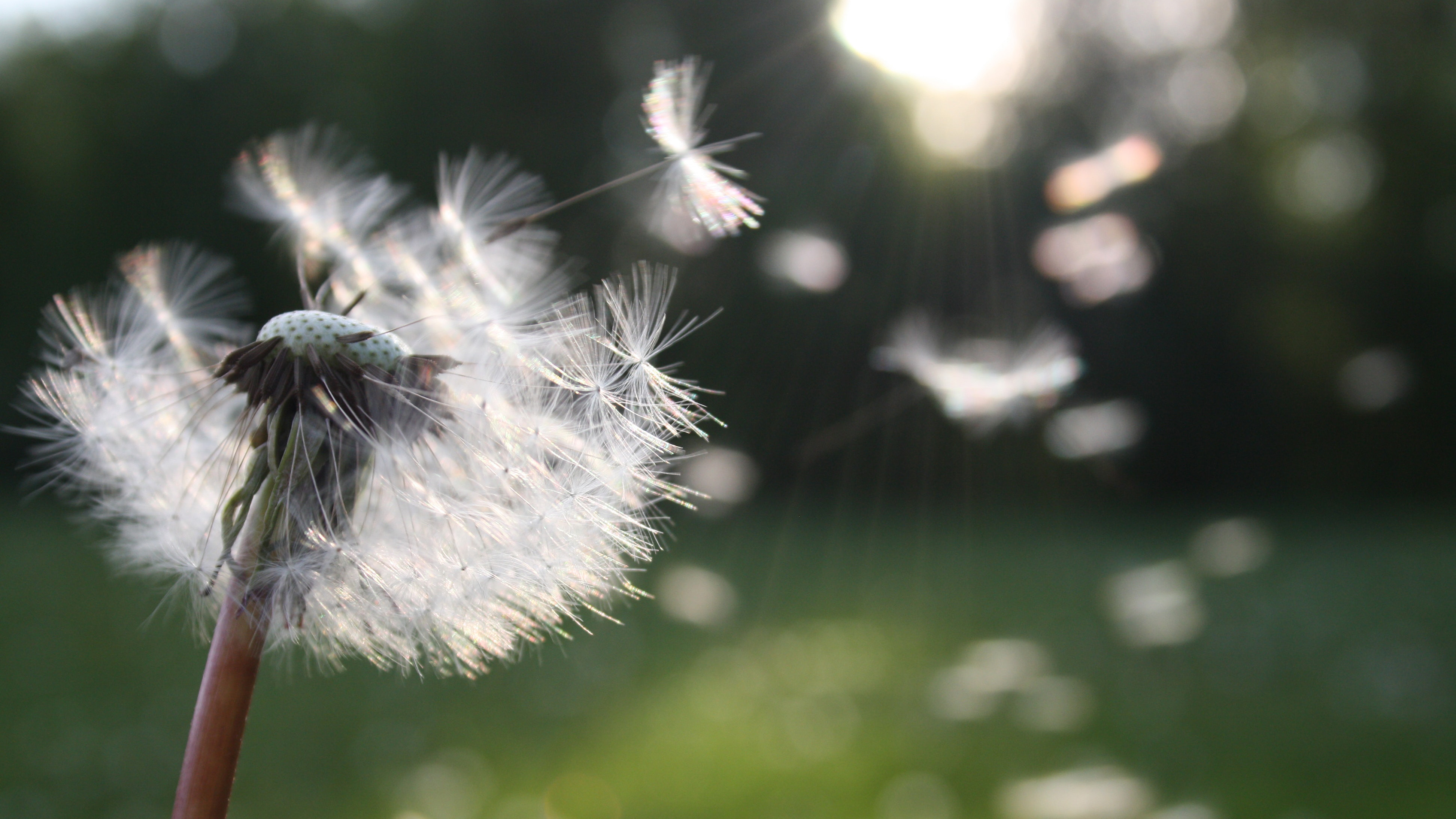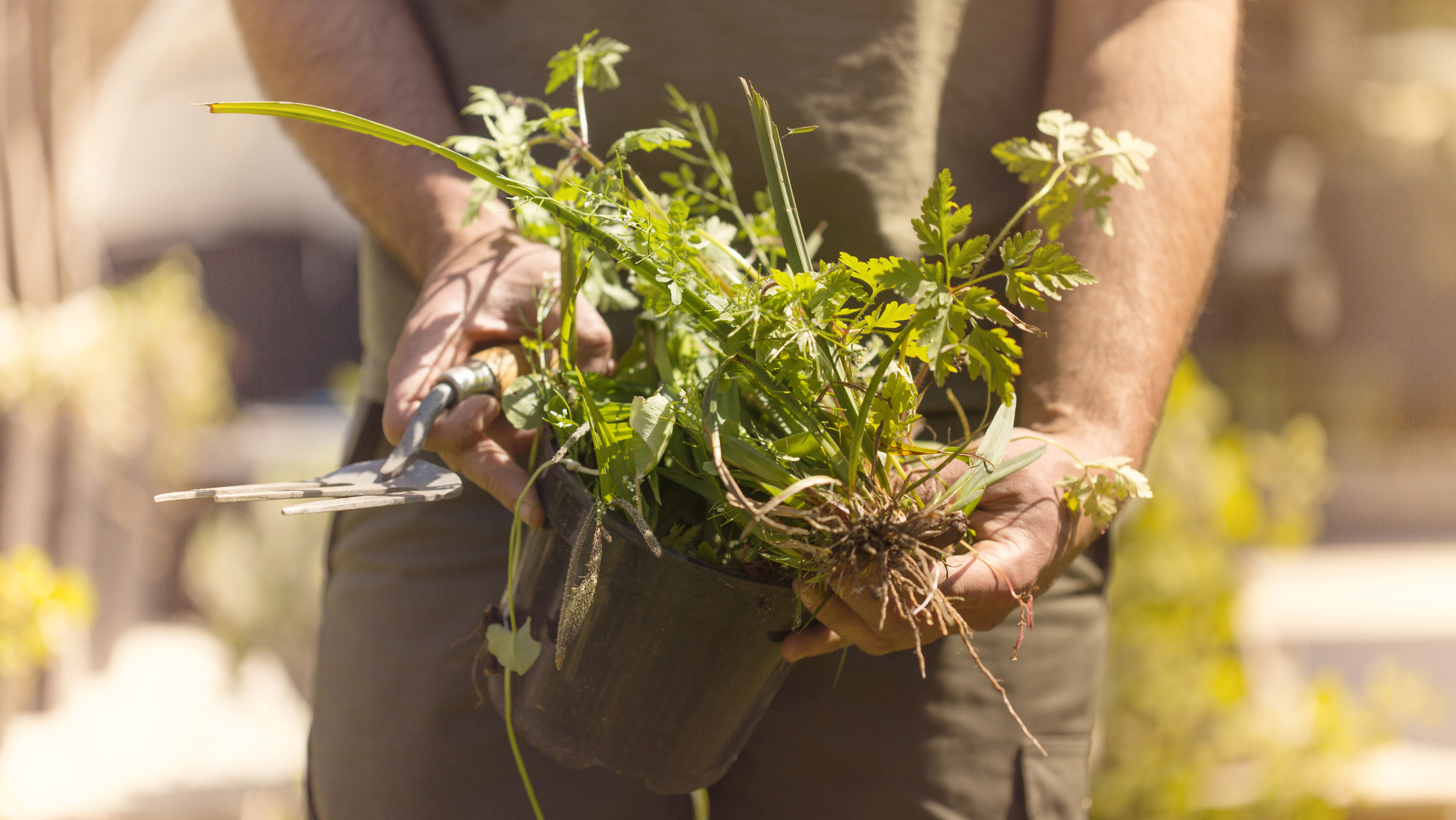How To Naturally Kill Weeds In Garden
How to kill weeds in your lawn and garden

Learning how to kill weeds in your lawn and garden is something most home owners have to get to grips at one time or another, especially when it comes to prolific weeds such as dandelions. So weeds are essentially unwanted plants growing in the wrong place, and they can be damaging to the overall health of your garden. That's because they drink up valuable nutrients and water in the soil that other desired garden plants could be using.
Yes, the best electric weed eaters can instantly rid them from your lawn, but unfortunately they won't prevent weeds from growing back. But don't panic, as here we've rounded up some brilliant tips to help you banish those pesky weeds forever, whether they are sprouting up from your lawn or elsewhere in your garden.
If you're looking for more ways to maintain your yard, check out our guide to the best gas lawn mowers for maximum cutting power, or the best electric lawn mowers for cordless use.
What are the most common garden weeds?
Whether we like it or not, at some point pretty much every garden will play host to common weeds. The trick is learning how to stop them from growing back once you've killed them (or you think you have). Most garden weeds can be controlled - it just requires a little time and effort.
WARNING: Several of the weeds featured in this article can cause rashes when they come into contact with your skin, so use protective gloves and clothing when dealing with them. Alternatively, hire a specialist to remove them.
In the US, the most common weeds include:
- Dandelion
- Common Daisy
- Plantain Plants (Plantago major)
- Common Ragweed (a major source of hayfever)
- Giant Ragweed (another major allergen)
- Hedge Bindweed
- Ground Ivy
- Stinging Nettle
- Clover Leaf
- Horsetail Weed
- Wild violet
- Groundsel
- Cleavers
- Wild onion and garlic
- Thistle
- Broad-Leaved Dock
- Nutsedge
- Chickweed
- Yellow wood sorrel

Weeds also have different types of roots, including:
Bulbil roots - So-named because the roots look like miniature bulbs. These types of roots are found on weeds such as bluebells.
Fibrous roots - The easiest weeds to pull up often have fibrous roots, which are thin and hairlike in appearance (and therefore easy to break).
Tap roots - If you pull up dandelion or thistles, you'll see they have long and thick roots. These are difficult to pull in one piece, so quite often a bit breaks off and remains underground to grow back.
Garden weeds can be pretty robust and difficult to remove, especially when it comes to those that have deep roots, or roots that are difficult to pull up in one piece. Yet weeding needn't be hard if you have the right tools to hand, so, depending on the weeds you're dealing with, we'd suggest grabbing one or a few of the following:
- Weed puller
- Sharp spade
- Weed twister
- Hand weeder
- Scuffle hoe
How to kill weeds in your lawn: A step by step guide
The best way to kill weeds in your lawn is by preventing them from growing in the first place. To achieve this, we'd suggest feeding your lawn every six to eight weeks to help your grass grow big and strong, leaving little room for weeds to cultivate.
Also, water your lawn deeply to encourage grass growth, and mow it at a taller height. The latter means lawn weeds will receive less sunlight and are therefore less able to sprout so freely.
Following on from that, we'd recommend the following:
Step 1: Use a fertilizer on your lawn that not only helps strengthen and grow your grass, but controls existing weeds already embedded in your lawn.
Step 2: If it's not time to fertilize your lawn, use a specific weed control product that targets the root of the weed at the source. This is often referred to as a 'spot treatment' and can prove to be very effective for robust weeds.
Step 3: If your lawn only has a few weeds, try hand-pulling them using a weed tool to remove the root firmly lodged in the ground. Tread carefully with dandelion roots, as these often break apart in the earth (this will almost inevitably lead to re-growth).

How to kill weeds without using chemicals
As we become more eco-conscious, learning how to use non-toxic ways to control lawn and garden weeds is a must. Luckily, there's a range of natural alternatives to try for those of you who would prefer to kill weeds without using chemicals. Here are the three most popular methods:
Boiling water – Pouring boiling water onto weeds is an effective way to shrivel and kill them. For an even more eco-friendly approach, you could make use of leftover water from vegetables or boiled pasta to help save water.
Use vinegar – This household product is a bonafide natural weed killer. Only apply it when you're due at least a few days of sunshine though, as the sun helps the vinegar to penetrate the weed and ensures it isn't washed off. Also, the higher the acetic acid percentage of the vinegar, the easier it will kill weeds, but only if you apply the vinegar directly onto the weeds.
Use good plants to crowd out weeds – In the garden, all plants (including weeds) are competing for nutrients, water, sunlight and growing space. So why not encourage the growth of popular plants, like Mint, Stonecrop or Yarrow? Any of these can stand up to stubborn garden weeds and keep them under control.
How to kill weeds without killing grass
Hand-weeding still remains the best way to kill weeds in your lawn and garden because you're tackling the problem at its root. Hand-weeding is also a fool-proof way of killing weeds without damaging your grass, although if you're too vigorous during the pulling stage, you risk creating large holes in your lawn that will need to be filled in.
The best advice is to tackle weeds while they're young and before they have had a chance to overrun and doing greater damage to your lawn. Here's how to kill weeds without killing grass:
Step 1: Use a sharp spade or weed puller and angle it downwards towards the centre of the plant, loosening the soil around it.
Step 2: Without breaking the weed's roots, use your tool to pry the weed upwards while pulling it.
Step 3: Once the weed is out, smooth the soil over, layer in some fresh compost and sow new lawn seeds.
Seeing unsightly weeds sprout up in your lawn or garden is pretty frustrating, especially if you have an infestation of dandelions, but it's a natural part of the gardening world. Hopefully, with this easy tips and suggestions, you'll be able to quickly get any weeds under control and make maximum room for the plants and flowers that you do want to thrive there.
Looking for more lawn care content? Then check out our guides to the best lawn edgers , as well as the best hedge trimmers for a polished-looking yard.
Becks is a freelance lifestyle writer. She started her career in print journalism at a local newspaper and has since then worked across digital and social media for food titles and home interior magazines. When she's not writing, she's reading and when she's not reading, she's writing.
How To Naturally Kill Weeds In Garden
Source: https://www.toptenreviews.com/how-to-kill-weeds-in-your-lawn-and-garden
Posted by: seasedeaders50.blogspot.com

0 Response to "How To Naturally Kill Weeds In Garden"
Post a Comment